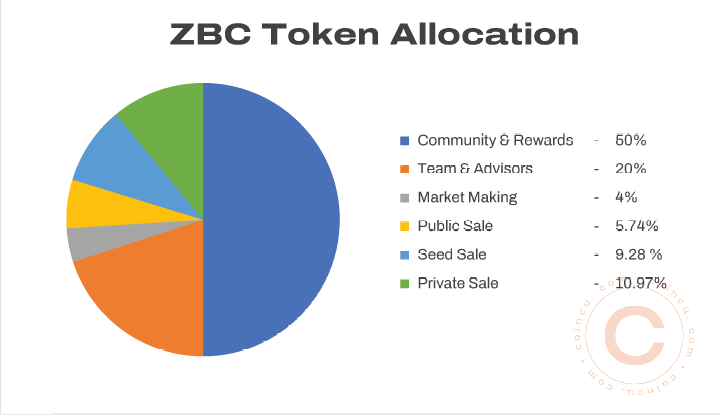In the crypto world, "payment" is an all-too-common thing. Transfer, confirm the payee, and arrive at one time. When we use the epoch-making cryptocurrency for payment, the basic form and process of payment are no different from traditional payments. Could cryptocurrencies offer a more disruptive payment method than traditional payments?
The answer is of course yes. Flow payment may be the form of payment that best leverages the advantages of cryptocurrencies. The so-called Money Streaming,That is to say, let the payment be generated continuously like a stream of water.The concept of stream payment was proposed by Andreas M. Antonopoulos in the second half of 2016. In 2018, the technical standard EIP-1620 specially designed for stream payment was produced.
Under traditional payment methods, I only want to use a membership service for one week, but I have to sign up for a one-month membership. However, you don’t need to worry about this kind of trouble when you use streaming payment, you can use it anytime and pay at any time. This novel payment method can provide users with more scientific and reasonable products, and also provides greater imagination for product design.
Zebec is a streaming payment protocol built on Solana.secondary title
What can be done with Zebec?
At present, there are relatively few high-end payment applications on the market. Regardless of the novelty of its form, this is naturally related to the performance of the blockchain. Streaming payments require continuous, uninterrupted payment fees. In most L1s, the gas fee alone is high enough to be unbearably high for such constant transfers. This is also one of the reasons why streaming payment has always been difficult to promote.
Zebec adopts the Solana network, making use of its high performance and low rate features to make the gas fee low enough to be negligible, thus making stream payment practical.In simple terms, Zebec Protocol provides real-time, continuous flow of funds for financial transactions including payroll, payments, investments, and purchases.
What are the possible application scenarios of stream payment?
Let's first assume one of the most common scenarios: salary payment. Under the traditional form of payment, the results of a month's work are only settled on payday. And this contains a variety of unfavorable factors such as wage arrears, company running away, and sacrificing liquidity.
This is not the case if streaming payment is adopted, which means that employees do not need to wait until a specific payday, but can get paid for their labor every day, even every hour, and get what they deserve earlier salary. For business owners, this can also provide better attractiveness to employees.Zebec Pay is redefining payroll for the 21st century.For the first time, employees can receive instant pay without having to wait days or weeks.
In terms of payment, it is a more obvious application scenario. For example, as mentioned above, for membership subscription services, streaming media platforms, paid news, game subscriptions and other products, users need to pay them a fixed service every year or every month. The application of stream payment can improve the efficiency of the entire industry.More fragmented payment allows users to truly pay for what they need, rather than buying more redundant and useless hours.
For crypto investors, on-chain investment management is a more direct and profitable application scenario for stream payments. For example, it is a lot of investment practice to make monthly fixed investment when paying salary, but the monthly investment is still full of too many uncertainties. Can the investment frequency be increased automatically? Flow payment can solve this problem. Zebec can realize the second-level dollar cost average investment mechanism. Through continuous but very small purchases, it can even out the cost of holding positions and avoid short-term fluctuations in investment, so that investors can pay more attention to long-term value rather than short-term. Disk direction.
And this is just the most basic usage of flow payment in the field of encrypted investment.Zebec is a programmable payment protocol. With the powerful composability of DeFi, users can also compile their own investment strategies and make automated investments.Zebec's payment flow can also be programmed per user for automated crypto investing, DeFi yield farming, and more.
For example, how to invest in a specific agreement under certain conditions? Only relying on manual monitoring and manual operation is complicated and extremely imprecise. And when the payment becomes programmable, all this is logical again. You can even design complex investment portfolios, and the agreement will help you execute them precisely and on time.
Now that DAO has begun to take shape and decentralized collaboration is becoming more and more popular, streaming payment protocols such as Zebec can also better assist DAO in fund management. Whether it is the inflow or outflow of DAO funds, if the payment is made through flow payment,Can better control the project schedule, expenditure process, more flexible settlement funds,Prevent the risk of DAO's "running away" or partners running away.
For example, streaming payment can be introduced at the time of fundraising. Agree on the key time nodes and roadmap, and make continuous payments as the project progresses, in case the fundraiser raises all the funds at one time and runs away directly. In addition, such mechanisms can still be used between early stage investments and mutual investments between DAOs and DAOs.
secondary title
How does Zebec build a streaming payment business map?
At present, Zebec has more than 30,000 users. As a payment product, the growth rate of its user scale is outstanding.
In March of this year, Zebec completed $28 million in financing and launched ZBC tokens. Among them, private investors of $21 million include Circle, Coinbase, Solana Ventures, Lightspeed Venture Partners and Alameda Research, and another $7 million of public token sales are completed in cooperation with Republic.
Zebec launched the ZBC token as the governance token of the Zebec DAO, and Zebec also plans to provide token holders with staking rewards and rewards for developers based on the protocol. The ZBC allocation model is as follows:

Zebec has an experienced and capable team.
The founder, Sam Thapaliya, was the co-founder of ASMI, an artificial intelligence and video analysis platform, and has more than 4 patents in the United States.
Co-founder Sajjan Thapaliya is the CEO of Selcouth Technology, one of the largest software development laboratories in South Asia.
Ajay Gautam is Zebec's CTO. He has worked as a researcher at Harmony, ICON, and co-founder of cybersecurity firm ReconwithMe & Nassec.
Head of Growth Subash Gautam was previously a co-founder at ReconwithMe & Nassec.
At present, only in the DeFi field, Zebec has reached extensive cooperation with many other agreements:
secondary title
How much value can be created by bringing users from Web2 to Web3?
In an ever-innovating crypto world, there is always innovation within the crypto world. However, innovations that are sufficient to penetrate the traditional world seem to be rare, and Zebec, a streaming payment protocol, is expected to break this situation. With the help of streaming payment tools, many things that are not yet possible in traditional finance and the current encryption world have gradually become feasible.
In the Web2 world, Zebec has also made good progress. Solana streaming payment protocol Zebec has partnered with Visa to join its Fintech Fast Track program.Zebec aims to be the first Solana ecosystem project to launch its own debit card.In addition, Zebec has also launched a fiat currency payment channel, users can transfer funds in or out through ACH transfers, and assets can be transferred to bank accounts without paying any fees.
In order to further acquire and expand its influence in the Web2 world, Zebec introduced Kim Crown as a partner,Its partners and advisors have executed many successful mergers and acquisitions on Wall Street.In the current traditional payment market, the shadows of Zebec's partners can be seen in the mergers and acquisitions of several famous payment companies such as Vine, Apolio, and Stripe.
According to Zebec, they have acquired several small and medium-sized payment companies in the Web2 field. Zebec intends to use the market that Web2 has been cultivating for a long time to transform its traditional products and integrate them into the blockchain to inherit the existing customers and serve them better. Integrating these companies can bring a large number of B-end users to Zebec in one fell swoop.
Zebec revealed to Odaily that the current global payment market is around US$200-400 billion. And just penetrating a small part of Web2 is enough to generate huge cash flow for Web3. When Zebec Protocol has a turnover of 20 million US dollars, it is expected to bring 2 million to 6 million net profits to the ecology. If this vision is achieved, this is one of the few cases in the encryption world that can rely on the project's own profits instead of selling tokens to survive.
It can be said that the success of Zebec lies in the use of Web3 to change the old productivity and production relations.Zebec provides better service for end consumers. And these user nodes have established one fund connection after another. Thanks to the popularization of flow payment tools, complex payment flows are criss-crossed in different business nodes, and the payment network established by a flow payment will gradually take shape.
secondary title
Where will Zebec go in the future?
How to create a strong project with high growth rate? This has always been the doubt that plagues the majority of entrepreneurs. And Zebec gave its own style of play: strong landing, clear user portraits, and a complete profit plan.
As mentioned earlier, through the acquisition of traditional payment companies, Zebec has gradually incorporated traditional business activities into its territory, and this is only their first step. By aggregating more commercial activities and aggregating larger capital flows, Zebec has the ability to capture ecological value from commercial activities. In the future, it will be integrated into the entire Visa system.
Zebec's ambitions are far more than commercial funds. It also has plans for G-end cooperation. In the future, Zebec will have access to government pension plans such as 401k, gradually covering a wider range of payment scenarios.
When the scale continues to expand, in order to better serve encryption users, Zebec will gradually support multi-chains. According to the plan, when the number of Zebec Protocol's C-end users exceeds 2 million, Zebec will develop an independent public chain system. When Zebec's cash flow reaches 1 trillion US dollars, Zebec will issue a stable currency USDZ based on 1:1 exchange.
Zebec founder Sam Thapaliya has publicly stated: "Despite the possibilities of DeFi and Web3, most organizations still rely on Web2-style payments. We built a DeFi-native solution for instant, seamless and continuous flow of funds, We think Zebec will be the chain payment model of the future.”
Flow payment, or programmable settlement, its value to us is beyond doubt. The difference between streaming payment tools like Zebec and other innovative fields is that this is not only meaningful to Web3, but also valuable to Web2 and traditional business. Flow payment may be the next outlet in the future, and make a certain contribution to transforming the existing business landscape.
Zebec is actively collaborating to accelerate the process of bringing its innovative payment solutions to tens of millions of users around the world.
TwitterOfficial websiteandTwitter。



